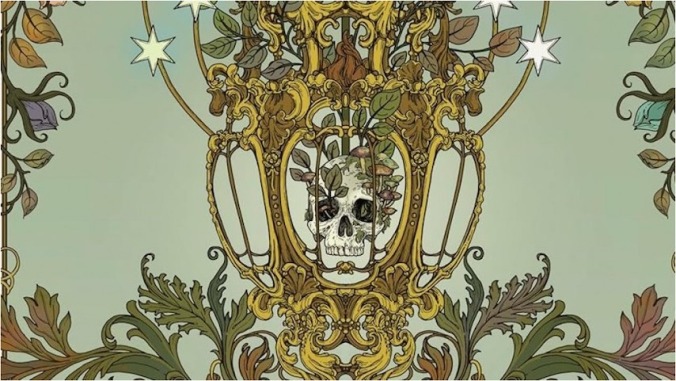The Sapling Cage Struggles to Grow Beyond Its Premise

In a creative work, what comes first: the concept, or the form? In really good art, the two seem inseparable. The best graphic novels, for instance, make it hard to imagine not seeing the images they contain. Hearing a great speech can make the written word seem insufficient. This cuts the other way too, though; sometimes the genre of a piece of art doesn’t feel like a match for its content. This was my experience with The Sapling Cage, a fantasy story with ambitions to expand the genre that unfortunately leaves plenty of what’s best about fantasy on the table, ultimately resulting in a disconnect between its form and its message.
The Sapling Cage, the newest novel by author Margaret Killjoy, follows Lorel, a trans girl who volunteers to stand in for her childhood friend and become a witch. Witches in this world are powerful members of covens who are in tune with natural magic, and when Lorel joins them she begins to learn magic at their hands. When the witches are blamed for an environmental disaster called the colddead, she becomes partially responsible for clearing their name and finding a solution. At the same time, because only women can be witches, she also has to keep her assigned gender a secret.
One of the reasons I wanted to review this book was because the premise reminded me of another fantasy series, Tamora Pierce’s Alanna books. Killjoy mentions the series, whose title character Pierce once said she’d make genderfluid if she wrote them today, as an inspiration for The Sapling Cage. Having enjoyed them as a kid, I’m glad that there’s now a series where a character in a similar situation is openly trans. Lorel’s transness and her attempts to keep it a secret are not only the premise of this first book, but an invitation to other fantasy novels to have explicitly trans characters who are more than just a bit part.
All that said, I was disappointed to leave this book feeling like Lorel was missing any interiority not related to her secret. Part of the reason for this is how quickly the story moves. We get into Lorel’s departure so fast (within 15 pages) that there’s little time to get to know—or care about—her hometown or the problems she faces there. Once she’s with the witches, there’s little time to catch up with the story and get to know her. In the slice-of-life moments we do get, Lorel’s personality can feel like an afterthought. She is a pretty regular fantasy hero in that she’s brave and (a little too) nice and trusting. These are fine character traits to have, but as the main tentpoles of her personality, they’re not enough to hold her up. And it’s worse when many major characters share these traits. As with the start of the book, it often feels like Lorel is speeding into her relationships with other characters without much basis for them. Her rival hates her on sight, her new friend immediately loves her. Suspicion and guardedness are mostly foreign qualities.
The upside of this is that the plot zooms along, and I always felt compelled to read more. However, much of what I found felt unearned. Each character sounds a lot like the others, meaning that, although we’re told differentiating facts about each of them, most don’t feel distinct. They also— especially Lorel— add sentences or asides when a scene could more elegantly be moved forward by silence or nonverbal description. All these are emblematic of a larger issue, which is that the novel prefers to tell rather than show its characters’ development and motivations, almost as if it’s afraid to give the reader too much control, lest they not understand the subtext. We’re also told about (rather than shown) Lorel’s romantic feelings for both men and women and the details surrounding her choice not to date previously. Her crushes are described in a decidedly detached manner, and her inner monologue often sounds like an omniscient descriptor rather than her own voice, such as when she’s describing her unreciprocated crush on her best friend. It’s worth noting that her dating life is a nice step toward diversity in fantasy media: it’s great to see a bisexual main character, especially one who isn’t overly sexualized. But much like her transness, her crushes on fellow witches are initially described as secrets she needs to keep hidden rather than romantic feelings for her to explore. This just made me sad; she’s suffered enough without having to conceal even more parts of herself in a community that’s supposed to accept her.
-

-

-

-

-

-

-

-

-

-

-

-

-

-

-

-

-

-

-

-

-

-

-

-

-

-

-

-

-

-

-

-

-

-

-

-

-

-

-

-








































